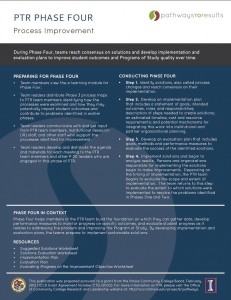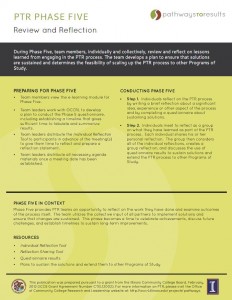
The PTR Process
Overview
PTR home page with goals, history, current topics, and events.
Overview
PTR home page with goals, history, current topics, and events.
Overview
PTR home page with goals, history, current topics, and events.
Pathways to Results (PTR) is an outcomes-focused, equity-guided process to improve student transition to postsecondary education and employment. PTR focuses on addressing equity gaps between diverse learner groups and continuously improving processes critical to degree pathways and programs of study that extend from the secondary to the postsecondary level. PTR is led by education, employer, and community partners whose shared goal is success for all students.
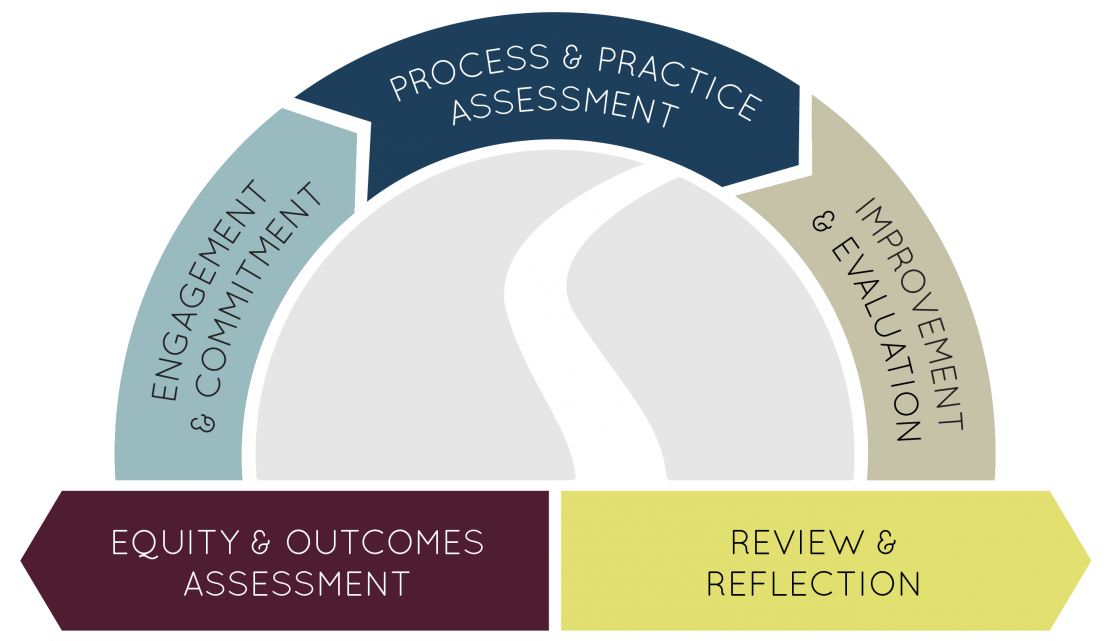
The Pathways to Results Processes
Introductory Resources:
Engagement and Commitment
Team members focus on critical problems that need to be addressed to improve program quality and student outcomes.
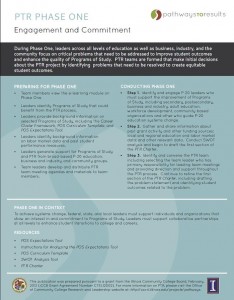
Importance of Partnerships
Kristy Morelock, ICCB, explains the importance of partnerships in PTR.
Primary Module
Supplements
-
SWOT Analysis Tool (docx)
-
PTR charter (docx)
-
Outcomes Menu (Phase 1) (docx)
Outcomes and Equity Assessment
Teams use student-level data to identify gaps in outcomes between racial, ethnic, low income, and other underserved populations.
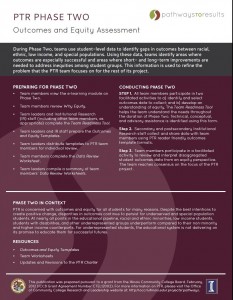
Through the Equity Lens
Brian Durham, ICCB, describes the importance of equity in PTR.
Primary Module
Supplements
-
Team Readiness Tool (docx)
-
Data Review Worksheet (docx)
-
Outcomes Menu (Phase 2) (docx)
Templates
Process Assessment
Teams analyze “core processes” (e.g., recruiting, advising, teaching, learning) that contribute to the problem.
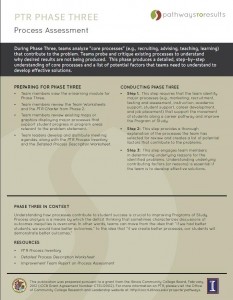
What's Going On Inside that Process Now?
Tim Harmon, OCCRL, explains the goals of process mapping.
Primary Module
Supplements
-
PTR Process Inventory (docx)
Process Improvement
Teams reach consensus on solutions and develop implementation and evaluation plans to improve student outcomes and programs of study quality over time.
Improving Counseling and Admissions
Julie Muertz, Southwestern Illinois College, describes what her PTR team learned by examining the counseling and admissions processes.
Primary Module
Supplements
-
PTR Implementation Plan (docx)
-
PTR Evaluation Plan (docx)
Review and Reflection
Team members, individually and collectively, review and reflect on lessons learned from engaging in the PTR process.
A Concrete Project
Judy Dietrich, Illinois Community College, reflects on what the PTR process has done for her partnership.
Primary Module
Supplements
-
Individual Reflection Tool (docx)
-
Reflection Sharing Tool (docx)
-
Survey Questions (pdf)
The framework for PTR is grounded in the Equity Scorecard® and related work of The Center for Urban Education led by Drs. Estela Bensimon and Alicia Dowd. We value their insights, encouragement and support of OCCRL’s work on PTR.
